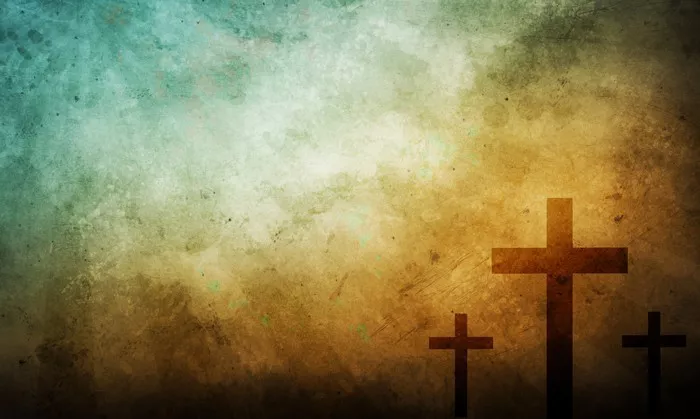Good Friday marks the solemn commemoration of Jesus Christ’s crucifixion, a pivotal event in Christian theology. This article explores the profound suffering and events Jesus endured on Good Friday, reflecting on its significance in the Christian faith.
Good Friday stands at the heart of Christian belief, recalling the crucifixion of Jesus Christ, whose life and teachings profoundly influenced humanity. This article delves into the events leading up to and including the crucifixion, highlighting the physical, emotional, and spiritual challenges faced by Jesus.
The Agony in Gethsemane
1. Gethsemane: A Night of Anguish
Before his arrest, Jesus withdrew to the Garden of Gethsemane to pray. Facing the weight of impending crucifixion, he experienced deep anguish and sorrow. This intimate moment portrays Jesus’ human vulnerability and his submission to God’s will.
2. Betrayal and Arrest
Judas Iscariot, one of Jesus’ disciples, betrayed him with a kiss, identifying him to the religious authorities who sought his arrest. This act of betrayal marked the beginning of Jesus’ journey towards crucifixion.
Trials and Accusations
1. Before the Sanhedrin: False Witnesses
Jesus faced multiple trials, starting with the Sanhedrin, the Jewish council. False witnesses accused him of blasphemy, seeking justification for his execution under Jewish law. Despite the false accusations, Jesus remained resolute in his purpose.
2. Before Pilate: Roman Judgment
The Jewish leaders brought Jesus before Pontius Pilate, the Roman governor, seeking a death sentence. Pilate found no fault in Jesus but, under pressure, he acquiesced to the demands of the crowd, symbolically washing his hands of responsibility.
The Road to Golgotha
1. The Scourging
Roman soldiers subjected Jesus to brutal scourging, a form of punishment involving whipping with a multi-lashed whip embedded with metal or bone fragments. This scourging inflicted deep wounds, demonstrating the physical torment preceding crucifixion.
2. The Crown of Thorns
Mockingly hailed as “King of the Jews,” Jesus endured further humiliation as soldiers fashioned a crown of thorns and pressed it onto his head. This act aimed to ridicule his claim to kingship and added to his physical suffering.
Crucifixion: The Ultimate Sacrifice
1. Carrying the Cross
Weakened by beatings, Jesus struggled to carry the heavy wooden cross to Golgotha, the place of execution. This iconic act symbolizes Jesus’ acceptance of his sacrificial role, bearing the burden of humanity’s sins.
2. Nailed to the Cross
At Golgotha, Jesus was nailed to the cross, fulfilling the prophecy of his crucifixion. The nails driven through his hands and feet secured him to the cross, an excruciating act that epitomized his self-sacrifice for the redemption of humanity.
Words from the Cross
1. Forgiveness and Compassion
Despite his suffering, Jesus demonstrated compassion, praying for forgiveness for those who crucified him: “Father, forgive them, for they know not what they do.” This act of mercy exemplifies Jesus’ teaching of love and forgiveness even in his final moments.
2. Promise of Paradise
To the repentant criminal crucified beside him, Jesus offered assurance of salvation: “Truly, I say to you, today you will be with me in paradise.” This declaration underscores Jesus’ role as a savior, extending grace to those who earnestly seek redemption.
SEE ALSO: A Comprehensive Exploration of Easter Devotion in Scripture
Death and Burial
1. Final Moments
After hours of agony on the cross, Jesus cried out, “It is finished,” signifying the completion of his mission to reconcile humanity with God. With this proclamation, he surrendered his spirit to God, marking his death.
2. Burial and Mourning
Joseph of Arimathea, a follower of Jesus, obtained permission to bury Jesus in a nearby tomb. Jesus’ body was lovingly wrapped in linen and placed in the tomb, fulfilling the prophecy of his burial and setting the stage for the miracle of his resurrection.
Theological Significance
1. Atonement and Redemption
Good Friday holds profound theological significance for Christians worldwide. It represents Jesus’ atoning sacrifice, wherein his death on the cross reconciles humanity’s sinfulness with God’s divine righteousness. This act of supreme love offers believers forgiveness and eternal life.
2. Victory Over Death
The crucifixion, though a moment of apparent defeat, culminated in Jesus’ resurrection, affirming his victory over sin and death. This pivotal event forms the cornerstone of Christian faith, symbolizing hope, renewal, and the promise of salvation.
Conclusion
Good Friday invites reflection on the immense suffering endured by Jesus Christ for the sake of humanity’s redemption. His journey from Gethsemane to Golgotha embodies the depths of divine love and sacrifice. Through his death and resurrection, Christians find hope, forgiveness, and eternal life, affirming the profound impact of Good Friday on the Christian faith and its enduring significance in the hearts of believers worldwide.

